How To Convert a Bread Recipe for Use in a Bread Machine
Sneak Peek: Learn step by step how to convert a bread recipe to a bread machine. Expand your bread machine recipe collection quickly.
If you are looking for the Soft Garlic Breadsticks recipe that used to be on this post, click here.
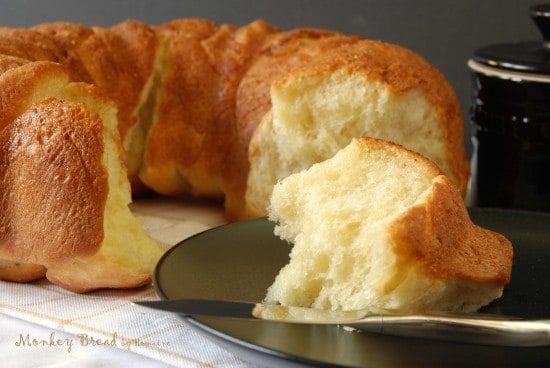
As an Amazon Associate, I earn from qualifying purchases.
Do you have a favorite recipe for Grandma’s bread or an old newspaper clipping for bread you’ve always wanted to try? Do you have a bread machine you want to use?
Find the recipe. Let’s talk about adapting it. Keep a tradition going or start a new one with the help of your bread machine.
Happy Bakers Speak Up
“This is an amazing resource. VERY THOROUGH!!!!! Much appreciated. Hubby has taken to making bread in bread machine and was wondering if he could use our regular bread recipes, and you have opened up a new world to him. Thanks!” —ROB and GEORGIE
What Is the First Thing I Should Do?
Before you start, determine the maximum amount of flour your machine can manage.
Look through the owner’s manual. If you don’t see the answer, review the recipes in the manual for the average amount of flour specified.
If you have no manual and can’t find it online, measure the pan with water. Fill the pan with 1 cup at a time until it’s full. Keep track of how many cups of water you poured into the pan and compare it to the numbers below.
Determine the capacity of your bread machine by the number of cups of water the bucket holds. For instance: 1.5-lb. machines hold 10 cups of water; 2-lb. machines hold 12 cups or more of water, and 1-lb. machines only hold 8 cups of water.
How To Find Out the Size of My Bread Machine Loaf
Approximate amounts of flour in various weights of bread
| 1-pound loaf | 2 to 2-⅔ cups flour |
| 1 ½-pound loaf | 3 to 3-¾cups flour |
| 2-pound loaf | 4-5 cups flour |
Does It Matter if My Traditional Recipe Is Bigger or Smaller than the Recipes in the Owner’s Manual?
- If your recipe contains more flour, it can be hard on the machine. You may hear the motor straining to knead it.
- Too much or too little dough may result in less than optimum kneading.
- If you are going to mix, knead, and bake the bread in your machine, a large batch may rise out of the pan and even spill over the sides. I don’t want to think about cleaning up the mess when the overflowing dough bakes inside the machine.
- When you bake a batch too small for your machine, the loaf will be short and squat. Imagine baking a Jiffy Cornbread Mix in a 13 x 9-inch pan.
How To Convert a Traditional Bread Recipe for Use in a Bread Machine
Step 1. Total all the flour.
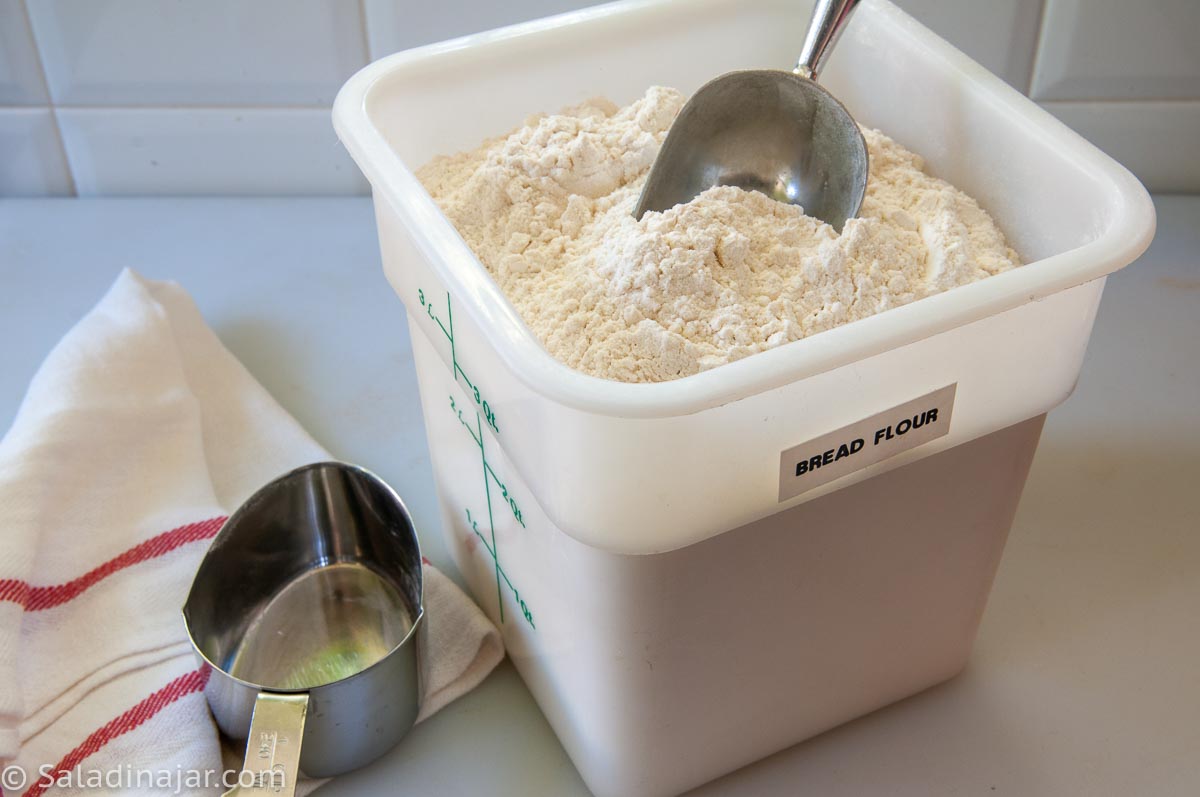
Always look at the amount of flour first. Then, be sure to add all flour and flour-like ingredients (such as oatmeal and Vital Wheat Gluten).
If the original recipe calls for more than the capacity of your bread maker, you will have to scale the recipe down.
For example, when I find a recipe specifying 8 cups of flour, I know that my first step is to cut the whole recipe in half to fit into my bread machine.
If the amount of flour called for in the original recipe is acceptable for your machine, proceed to Step 3.
PLEASE NOTE: If you plan to actually bake your bread in the machine, replace all-purpose flour with bread flour. The extra protein in bread flour will help your bread rise higher but may require a little more water. Remember that in Step 3.
Step 2. Refigure the other measurements accordingly.

In other words, if you divide the flour by two, do the same with the other ingredients.
- Dividing some measurements can be awkward. For example, you may need to halve a third of a cup of sugar. Make it easy on yourself and ask Alexa or look it up on your phone. I found the exact amount of half of 1/3 cup of sugar on Google.
- The crucial ingredients to get right are flour, liquid, and salt. Practice measuring flour correctly. It’s important if you hope to avoid dense bread.
- Seasonings can be adjusted to your preferences. You can guess at a 1/3 teaspoon of a spice you love by using a heaping 1/4 teaspoon. Spices are rarely deal-breakers.
- If you have an odd number of eggs, use a liquid egg substitute. Another approach is to beat a slightly larger number of eggs and measure out a scant 1/4 cup of an egg for each egg specified. Or use a whole egg (instead of half) and reduce the overall liquid in the recipe by 2 tablespoons.
- If you change the dry and wet ingredients into their weight based on grams (ask Google how much various ingredients weigh in grams), it makes dividing and measuring easier.
Step 3. Total all the liquids.

- Treat milk, buttermilk, yogurt, whey, fruit juices, and vinegar like water in this step.
- One large egg is equal to a scant 1/4 cup of liquid. Include any eggs in your liquid count.
- Handle Greek yogurt, mashed potatoes, sour cream, vegetable puree, applesauce, bananas, etc. as half-liquid. Adjust your overall liquid accordingly. If the recipe contains honey or maple syrup, it will contribute some moisture, but the amount is variable.
- Oil and butter are not included in the liquid. (See discussion below.)
You will need roughly 3/8 cup of liquid per cup of flour.
Put another way, a standard loaf requires slightly over one cup of liquid for 3 cups of flour. Although not a hard and fast rule, it’s a place to start. All liquid is not equal.
In the sample recipe shown below, my new flour measurement is 2-½ cups + 2 tablespoons (315 grams). Therefore, I will need a little less than 1 cup of liquid in my Herbal White Bread. I would need more than that if I mixed this recipe by hand.
Step 4. Are different types of yeast interchangeable when using a bread machine?
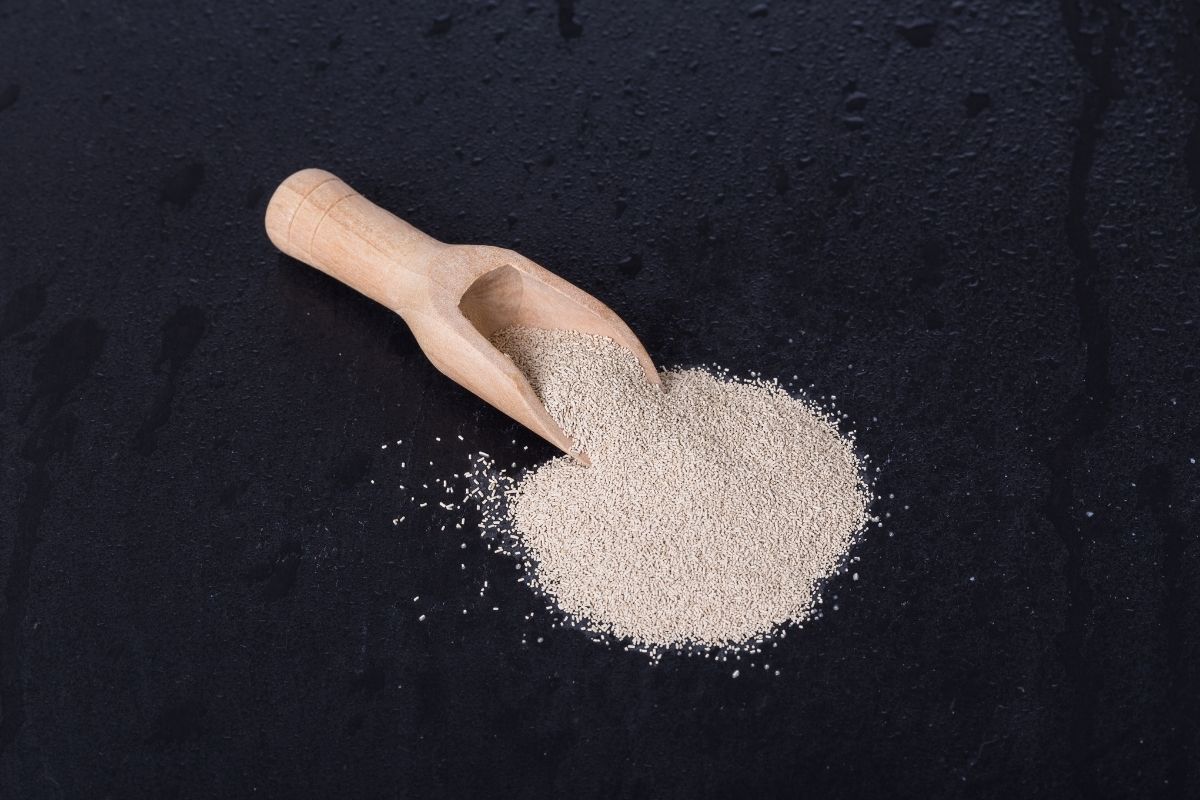
When using a bread machine, I recommend using instant, quick, or bread machine yeast. These are the same, don’t need to be dissolved, and work with bread maker recipes.
Even if the original recipe calls for active dry yeast, substitute instant yeast using 1/4 teaspoon less than specified.
Active dry yeast is slower to rise than instant yeast. Although modern-day active-dry yeast formulations make dissolving unnecessary, it’s still OK to dissolve if you like.
Yeast is not always easy to figure out when you are scaling a recipe. Compare it with a similar bread machine recipe you’ve had success with already.
For example, I divided the yeast in half in the recipe below. Therefore, I should use one teaspoon of yeast (2-¼ teaspoons of active dry yeast replaced by two teaspoons of instant yeast then divided in half).
I know from experience that baking in the machine will require more yeast to raise the dough before the baking cycle kicks in. So I guessed and went up to 1-¾ teaspoon. It worked.
Related Post: 5 Keys To Using Yeast in Your Bread Machine with Confidence
Step 5. Salt: You have to have it.

Many people want to cut out salt due to dietary restrictions.
Salt acts as a control pedal for yeast. Without salt, your yeast will rise too high, too fast, and give out when you need it most.
Generally, use 1/2 teaspoon of salt for every cup of flour. You might be able to decrease that a bit after experimenting, but don’t leave it out.
If you can’t have any salt in your diet, look for recipes that have been designed specifically for no salt.
Does the type of salt you use matter?
If the recipe isn’t specific, assume the recipe developer used table salt or sea salt. (Check the cookbook intro to be sure.) If you only have Kosher salt on hand, increase the amount by 1/4 teaspoon.
Step 6. Sugars
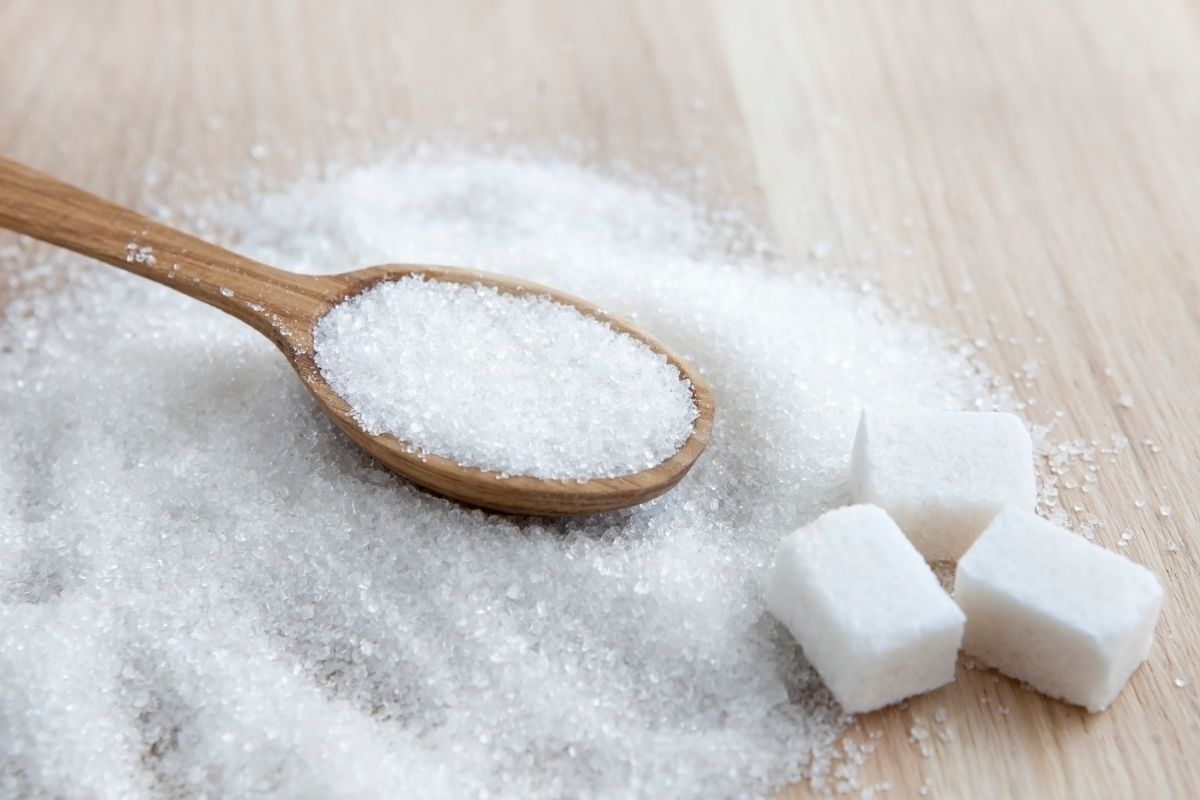
Yeasty bodies love to munch on a spoonful of sugar while producing microscopic bubbles that make your bread dough rise.
When the original recipe calls for a teaspoon or less sugar and a small amount of water to use in pre-activating the active-dry yeast, I leave them both out because I use instant yeast instead.
Be aware that sweet doughs with a high sugar ratio will make your yeast sluggish like humans after Thanksgiving dinner. Allow a longer rise (a good reason to use the DOUGH cycle).
Read more about the effects of sugar in yeast bread.
Step 7. Fats
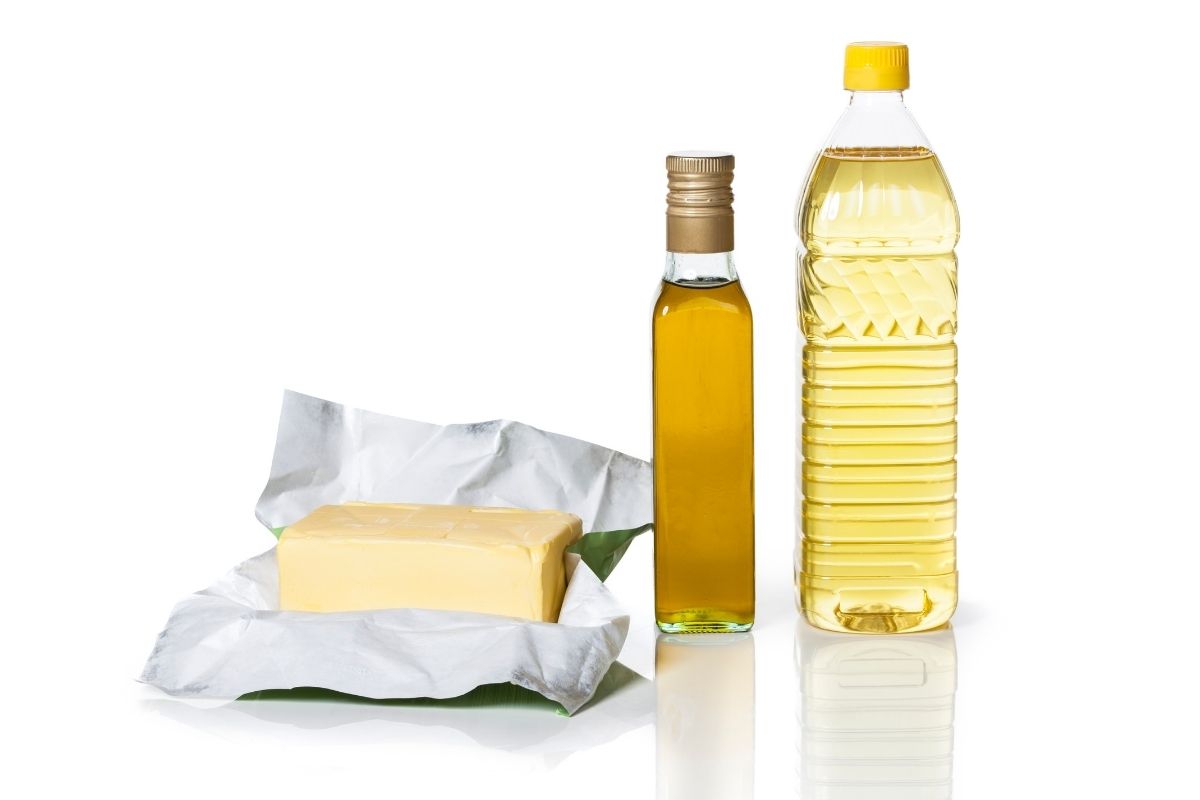
Many older bread recipes call for shortening (Crisco). Butter is a good substitute for shortening. You can also substitute oil, but it may change the texture slightly (not in a bad way, just different). So again, experiment to see what works best for your tastes and a specific recipe.
Avoid coating the yeast with fat before mixing it with flour. Instead, pour the fat into the liquid under the flour when dumping the ingredients into the pan. Another trick is to use a table knife to chop up cold butter into tiny pieces. The heat caused by friction will quickly melt that better.
Butter or fat should be soft (not melted) and cut into small pieces.
Step 8. Add-Ins
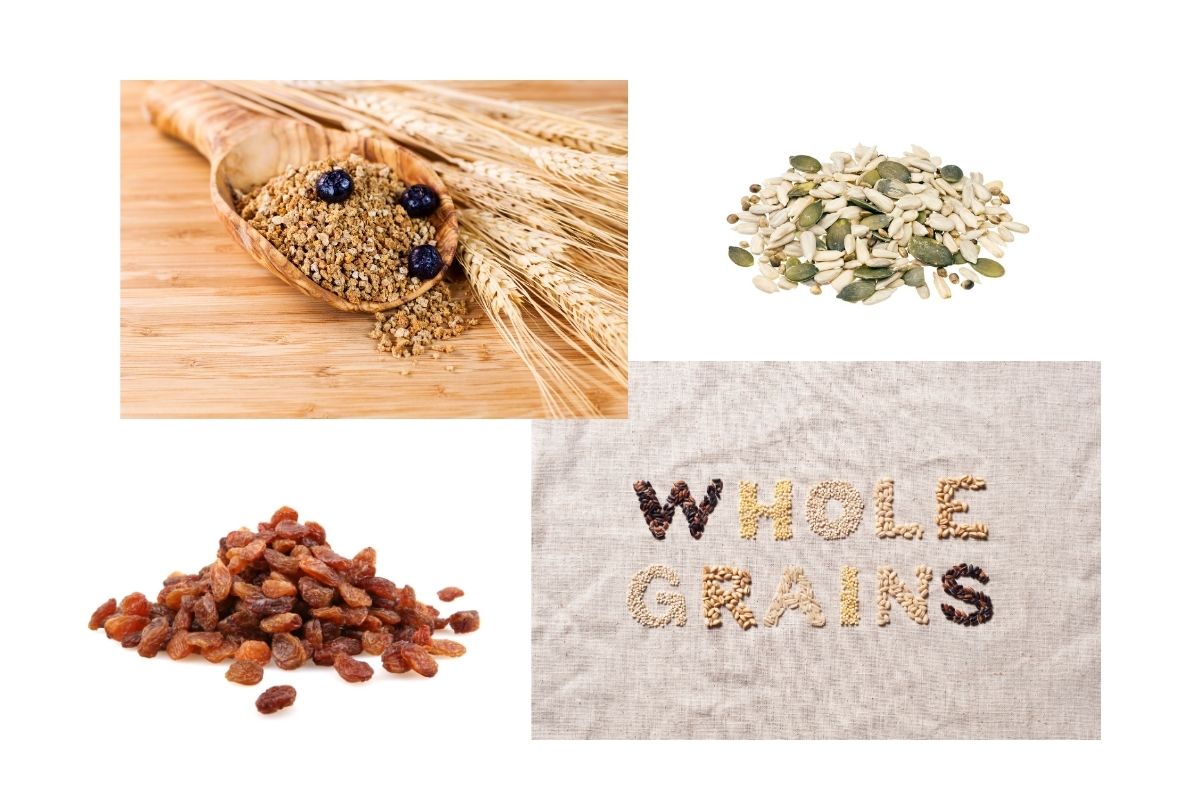
Based on the emails from excited new bread machine owners, many people hope to make their bread healthier by adding seeds, dried fruits, whole grain flour, etc. Proceed with caution in the beginning. Too many add-ins will weigh the bread down and cause denseness. Start with no more than 1/2 cup for a 1-lb recipe until you know how much your recipe will tolerate.
How To Assemble the Ingredients for a Recipe Converted to a Bread Machine Recipe
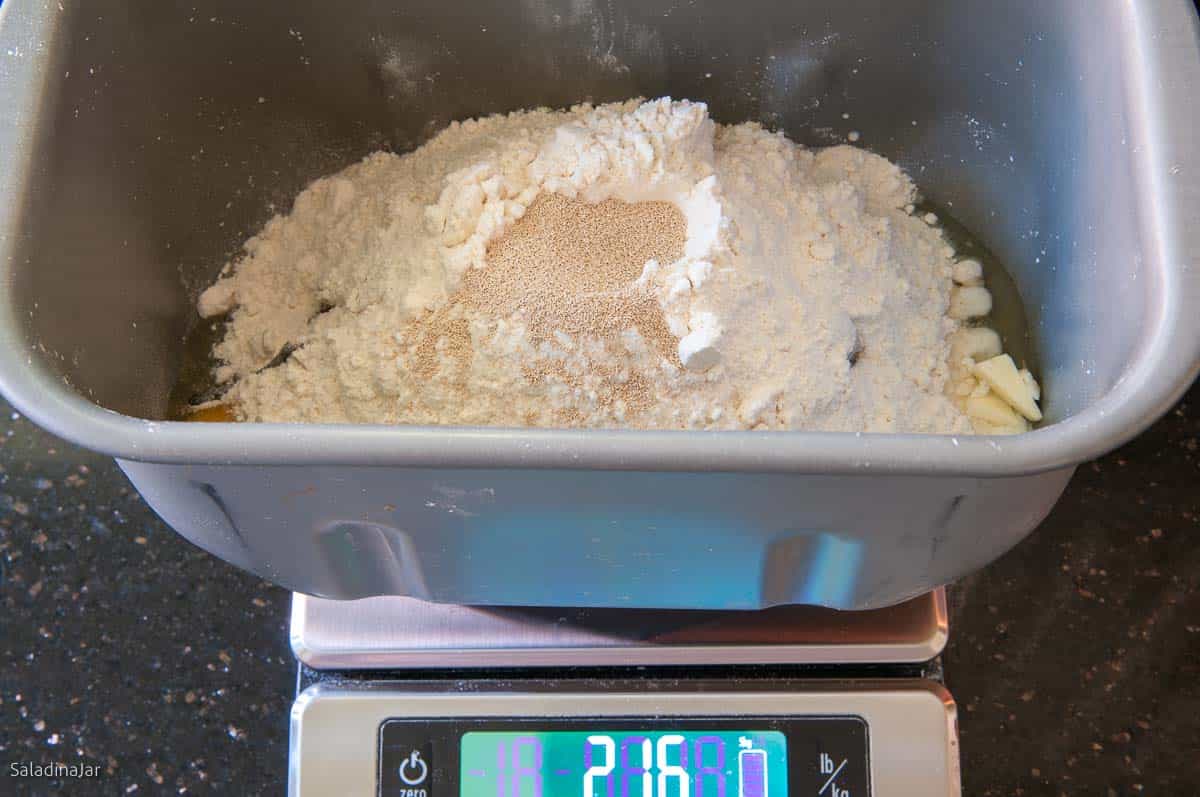
1. The order matters.
Add wet ingredients first–then salt, fat, flour(s), and yeast last. Some brands of bread machines will tell you to put the dry ingredients in first and then the wet ingredients. Do whatever works best with your bread maker.
2. Room temperature matters.
Addendum: After doing some experimenting, I no longer think it is important for all ingredients to be at room temperature. The friction caused by the kneading action of the paddles heats the dough quite nicely. If you don’t believe me, stick a quick-read digital thermometer into the dough when it finishes kneading in a bread machine. It will be between 80 and 90˚F. That’s plenty warm for yeast to work up an appetite.
The temperature of your ingredients is more important if you use the bread machine to mix, knead, and bake your bread.
3. Hold back some of the liquid.
Predicting how much liquid you need is the hardest part of converting a traditional recipe to a bread machine recipe. The first time I make a recipe, I usually reserve about a fourth of the liquid to add to the dough after the kneading cycle begins, if needed.
4. How do I know if I need to add more flour or water?
The goal for perfect bread dough during the kneading cycle:
After kneading for several minutes, the dough should make a tacky and irregularly-shaped ball that sticks to the side briefly, then pulls away cleanly.
Getting your dough to this point is CRUCIAL to avoid many problems with the final product.
A Quick Troubleshooting Guide
- Is the dough crumbly? Add liquid.
- Is the dough bouncing off the walls like a rubber ball? Add liquid. You may have to use a spatula to separate the ball so it will accept more liquid.
- Does the dough look like pancake batter? Add flour.
- Does the dough stick to the side and pull away but not cleanly? Add a small amount of flour.
If your dough doesn’t fit the description in the box above, add liquid or flour one tablespoon at a time. Give it a chance to mix in. Re-evaluate.
This step is the most important thing you can do when using a bread machine to ensure success.
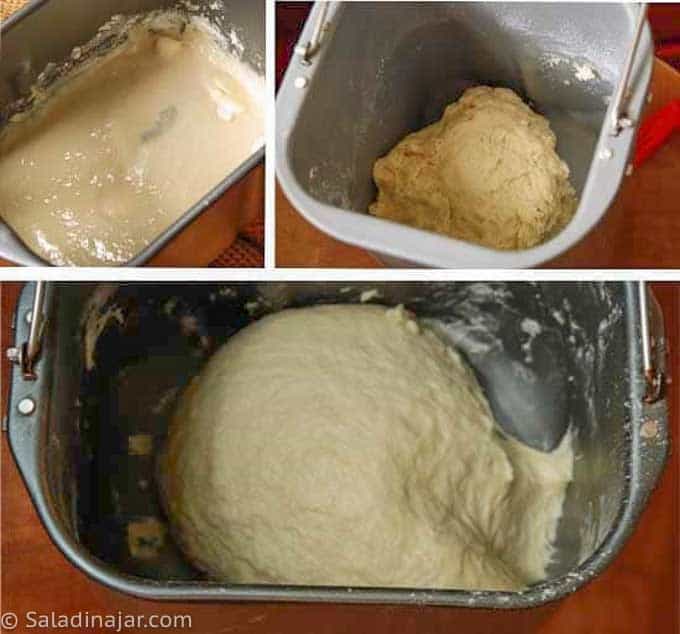
5. When to add raisins, nuts, cheese, etc.
Wait for the beep close to the end of the kneading cycle before adding things like nuts or raisins. These ingredients will be pulverized and disappear into the dough if added with everything else at the beginning.
All is not lost when using the DOUGH cycle if your machine has no beep or you don’t hear it. Work the ingredients in by hand before you shape the dough. Otherwise, remove the dough after one of the rising cycles, work the ingredients in by hand, and place the dough back into the bread machine pan.
FAQ
Most of them. Even wet and sticky doughs are perfect for the DOUGH cycle. Ciabatta, rye bread, and brioche come to mind. Even traditional sourdough bread without commercial yeast is easily mixed and kneaded in a bread machine.
Whenever you bake in a bread machine, it’s harder to produce a nice-looking loaf. The appearance and crust can’t compare to shaping bread by hand and baking bread machine dough in the oven.
With that disclaimer, you can make your favorite loaves from start to finish in your bread maker. If your bread rises too high and hits the lid, reduce the entire recipe, starting with the flour and yeast. If it is too small and dense, check out my post about the causes of dense bread.
Bread doughs with a high percentage of hydration generally develop gluten using time and not so much force (kneading), often under refrigeration. Recipes such as these Overnight Bran Rolls, along with no-knead bread recipes, are too wet to benefit from a bread maker. A stand mixer or mixing by hand is more efficient for mixing this type of dough.
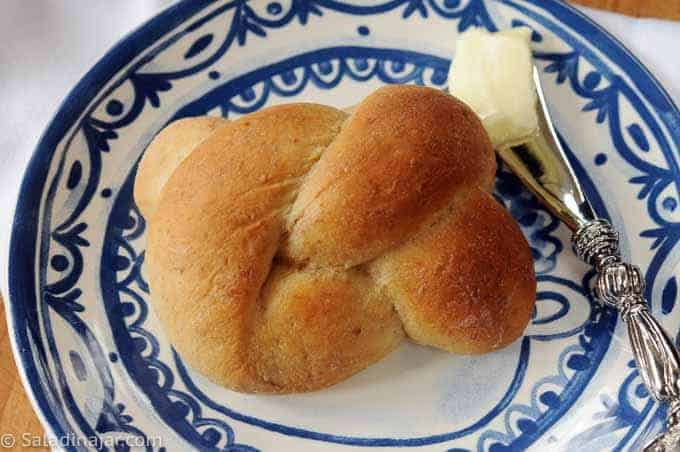
A bread machine has no brain–only a timer.
Parting Thoughts: The more your dough is set up to behave according to what the timer expects (not always easy), the more likely you will have bread success. That’s why it is nearly impossible to make a beautiful loaf with a bread machine. How do you read a bread machine’s “mind?”
What recipe do you want to try in your bread machine? I can’t wait to hear about it. Pictures in my email are even better.
What Would You Like To Read Next?
- 6+ Bread Maker Tips You Need To Make Marvelous Bread
- Why Baking Bread Machine Dough in the Oven is Better and How To Do It
- How to Make Herb Dinner Rolls With Your Bread Machine
- Condensed-Milk Soft White Bread Recipe
If you have questions or suggestions, email me privately for a quick answer: Paula at saladinajar.com. Hope to see you again soon!

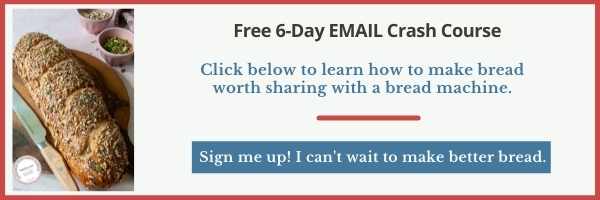

Paula Rhodes, owner
As a retired home economist, I created Saladinajar.com to share my belief that you don’t have to be a chef to find joy in creating homemade food worth sharing. Bread machines (used in an unconventional way), homemade yogurt, and quick microwave recipes are my specialty.